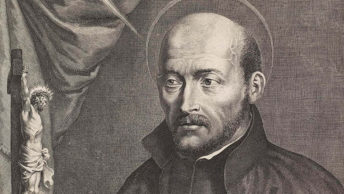There seems to be great confusion about the Catholic view of womanhood in our culture. The loudest voices in our society say that women, especially within the Catholic Church, are oppressed. They supposedly have no voice in the Church, have their “reproductive rights” dictated by evil men, and are relegated to the home. This leads to society celebrating any woman who makes it big on the public stage, regardless of her virtues. I think what is desperately needed is a study of true Catholic femininity, and the best way to see this come to life is through examples. I have chosen 3 different women saints to demonstrate the Church’s understanding of womanhood – Mary, St. Joan of Arc, and St. Gianna Molla.
Mary, Mother of God
No discussion of Catholic femininity would be complete with discussing Mary, Mother of God. One could write novels on our Blessed Mother (and many people have), but I will stick with a few thoughts. Mary’s role in God’s plan literally changed the world for all eternity and no woman since has been more honored. She is the ideal for women of all time. As the virgin mother of Jesus, she is the archetype for single women, consecrated religious, and mothers. What makes her the ideal woman? In a word, her Fiat. At the Annunciation, the angel Gabriel asked, on behalf of God Himself, if Mary would bear the life of His Son, the Messiah. Despite the seeming impossibility of such an occurrence, Mary said simply, “Be it done to me according to thy will”, and she conceived and bore the Savior of the World. Mary is the ideal woman because she submitted entirely to God’s will in consenting to bear and nurture life. This is the call for ALL women, regardless of vocation or profession, regardless of time or place.
St. Joan of Arc
Let us now fast forward many years to the Hundred Years’ War. Joan of Arc was born in 1412 in the small French village of Domrémy. As a young, illiterate girl, she began to hear the voices of Sts. Michael, Catherine, and Margaret instructing her to help the French reclaim their nation from the English. The path to do so was complicated, and she had to prove her Divine inspiration to several important people before being allowed to meet the rightful King Charles VII and convincing him to give her troops. Joan successfully led the French to many victories and stood by King Charles during his coronation. However, she was eventually captured by the English and was burned at the stake.
Joan can easily be twisted into a modern “feminist” icon. But Joan did not see her calling as a way to prove that she was just as good as any man. Nor did she forfeit her true femininity in order to be a great military leader. While she never physically had children, she fulfilled her calling as a woman to bear and nurture spiritual life.
As leader of her troops, she guided them in driving out the enemy not only on the battlefield, but also in their souls. She did not allow her men to curse or use crude language, and she did not permit women into the camps. She insisted on daily prayers and regular confession with the chaplain, along with mass attendance on days of obligation. Over time, her example and spiritual leadership began to change them.
“Joan had the power to make thousands of armed men love her, not as an object of romantic desire, but as the living focus of their hunger to serve a higher cause” (Richey, Joan of Arc: The Warrior Saint, 112-113)
As our Mother Mary inspires men with her beauty and goodness to serve God and the Church, so Joan roused her troops to fight for a just cause.
And as Mary loves all her children, even in times of sin and death, so Joan loved her enemies. Although Joan was called to fight the forces of evil, she did not rejoice in the destruction of life. Before she went into battle, she would write letters to the English troops begging them to leave without a fight. But even when they would not surrender, Joan still showed compassion. Her motherly tenderness is fully seen in the description of her as
“A Maid kneeling at the roadside, while around her echo the whinny of horses and the shrieks of the murdered. She presses the head of an unknown, dying enemy to her breast and prays for his soul.” (Sven Stolpe The Maid of Orleans, trans. Edwin Lewenhaupt)
Joan of Arc shows us that God may call women into any life path, but we are always called to bring our “feminine genius” on the journey. It may seem incongruous to think of a soldier on the battlefield as particularly feminine and tender. However, a second glance at many of our Marian statues show our Mother, the archetype of femininity, crushing the head of a serpent with her bare foot. Being a woman does not mean being timid or weak. Women are called to be courageous and strong in many ways. But we must never forget our true calling, which is the giving of ourselves to nurture souls.
St. Gianna Beretta Molla
Gianna was an Italian physician, specializing in surgery. At the age of 28, she opened her own practice, and then returned to school to receive another specialty in pediatrics. She intended to use her skills as a missionary in Brazil but her poor health kept her from doing so. She eventually followed God’s call to matrimony and married an engineer, Pietro. She quickly had three children but continued to work and be involved in the community.
While many are tempted to separate work from personal life, especially spiritual life, Gianna made no such distinction. According to her husband when asked about Gianna as a physician,
“She often repeated: ‘Whoever touches the body of a patient, touches the body of Christ.’ It was a quasi-sacramental concept, according to which Gianna sought to cure illnesses but at the same time bring comfort to spirits.” (Gerriero, Elio and Pietro Molla, Saint Gianna Molla, 73)
Gianna was also part of the St. Vincent de Paul Society and leader of the Young Women of Catholic Action. Together these women visited the elderly poor, doing simple chores for them and bringing them cheer.
Whether in the hospital or in the community, Gianna cared for everyone around her with great love and joy. Her greatest joy, however, was her children. She never wasted a moment with them, carving out time for concerts, skiing, and play. She also taught them to pray and to see God in everything. Gianna loved her children and would empty herself entirely for them. She once said,
“Love and sacrifice are as intimately connected as sun and light. We cannot love without suffering or suffer without loving. Look how many sacrifices are made by mothers who truly love their children. They are ready for everything, even to give their own blood.” (Gerriero, Elio and Pietro Molla, Saint Gianna Molla, 90)
She was given the opportunity to witness to her belief when she became pregnant with her fourth child. In her second trimester, she started to feel intense pain and was found to have a tumor in her uterus. She was given the options to have an abortion or a hysterectomy – both of which would end the life of her unborn child – or to undergo a surgery to only remove the tumor. The third option would spare the child’s life, but put Gianna’s at risk of complications. Gianna bravely opted for the surgery, knowing that she may not live. Over and over, she told her family and her doctors that if it came to it, they should preserve the baby’s life over her own. On April 21, 1962, her daughter Gianna Emmanuela was safely delivered. Gianna, however, became ill from the surgical complications and died one week later.
Gianna’s early life could be seen as that of a “modern” woman’s. She worked hard in her profession and did not stop when she had children. But Gianna was not the hardened feminist that many wrongly aspire to be today. She lived her career as a calling to love patients, and she prioritized motherhood. Once again, being an authentic woman does not mean we cannot go into serious professions. God may call women to any line of work, but he always calls them to bear and nurture life. Gianna lived this as a physician, but more importantly as a mother willing to die so that her child might live.
Conclusion
The prevailing “feminist” agenda focuses on a superficial equality between men and women, despite the great cost of such a goal. Women and men of course should be recognized as having equal dignity. But to encourage women to be poor imitations of men, is to deny women of what makes them unique and great. This approach hurts not only women, but also families, and society at large. We should instead celebrate and support women who fulfill their true calling to physical or spiritual motherhood, regardless of profession or vocation. And as our image of ideal womanhood is restored, so too will be our culture.
Pope St. John Paul II, principle representative of the Catholic Church, showed support for this line of thinking:
Thank you, women who work! …You make an indispensable contribution to the growth of a culture which unites reason and feeling, to a model of life ever open to the sense of “mystery”, to the establishment of economic and political structures ever more worthy of humanity.
Letter to Women, June 1995
And Venerable Archbishop Fulton J. Sheen brilliantly summed up our situation, so many years ago:
Woman is the measure of the level of our civilization. It is for our age to decide whether woman shall claim equality in sex and the right to work as at the same lathe with men, or whether she will claim equity and give to the world that which no man can give.
The World’s First Love, January 1957, pp. 184
It is imperative, then, that we women embrace God’s role for us and set the example for the rest of the world!








